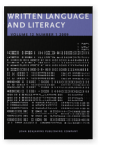Vol. 12:1 (2009) ► pp.1–25
Developing a depersonalized stance through linguistic means in typologically different languages
Written expository discourse
Attaining rhetorical competence requires the capacity to use linguistic form to communicate discourse stance as well as discourse content. Languages provide their speakers with a range of options to express content in ways that reveal orientation, generality of reference, and attitude to the propositional content of their message to create a more involved or detached discourse stance. This paper focuses on the linguistic means used by children (9–10-, 12–13-, and 15–16-year olds) and university graduate students in French and Spanish in their attempt to create a detached discourse stance in expository texts. Two types of linguistic means for encoding discourse stance are examined: local devices which call for the manipulation of morphology and the lexicon, and phrase-level devices which require manipulation of argument structure. Our results show (1) that children in both languages are sensitive to the necessity of encoding a depersonalized discourse stance in expository texts early on; (2) that local devices are productive before those involving the rearrangement of argument structure; and (3) that with development and increasing interaction with academic texts the range of devices employed increases. The data reveal that for the phrase-level devices French speakers prefer passive constructions, while Spanish-speakers prefer se-constructions. Our results illustrate how later language development is influenced by language-specific facts and literacy interacting with universally shared communicative needs.
Cited by
Cited by 9 other publications
This list is based on CrossRef data as of 18 june 2024. Please note that it may not be complete. Sources presented here have been supplied by the respective publishers. Any errors therein should be reported to them.
